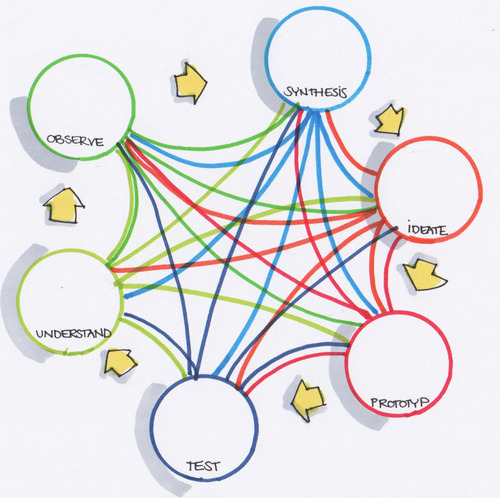Benefit N° five: reduce complexity and simplify
Our world is changing at high speed: everything is interconnected and complex. It is a human need to keep thinks simple and understandable. This counts for new products and services just as for the collaborative innovation process itself. As the process is not following a stage gate or waterfall structure and has no clear script or check list to follow, the design skills of structuring, visualizing and sharing complex information are a high value for the entire group.

design thinking: not exactly a stage gated approach
Interviews with design thinkers and design thinking coaches of a multinational software corporation, identified 'presentation and documentation' as a crystallized painpoint. 'A lot of ideas get lost', 'shareholders only see the decided upon direction', 'the process is not transparent', 'it's hard to follow up if there has been a break in the process', 'we have no idea if a similar project has happened and what the outcome was', 'it's hard to coach or be involved in the process and at the same time put together a presentation for stakeholders or other groups','post-its with visuals don't digitize well' were some common responses.
A designer participating in the process can wrap up the most important outcomes of a phase or workshop day in a visual way allowing the group to easily continue or connect to what has been discovered so far - even if there has been one of those 'inevitable breaks' (which are hard to avoid working in a multidisciplinary team). Mindmaps, storyboards or graphic recordings are great tools to document an overview, to make connections between visible dots, to simplify without loosing important content. It's not important to keep every single post-it of a workshop week - they are just tools for thought, but roll out a storyboard and sum up the learnings, insights and ideas in a few minutes and your team and your stakeholders will be well prepared for the next step.
- Erstellt am .